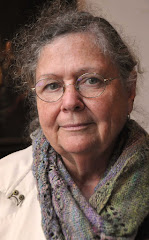Dress Journal #9: New Clothes Mean New Underwear
Historic spinning demonstrations have become a hot commodity. I have three this year: one was in April at Ardenwood Farm in Fremont, and there are two upcoming ones--in October and December--at Bale Grist Mill State Historic Park, north of St. Helena. These are all circa 1855 demos, in "costume," so I need something appropriate to wear."Costume" can be pretty broad when it comes to local historic sites. Most historic sites (Sutter's Fort in Sacramento is a notable exception) let their volunteer docents wear whatever they can manage in the historic clothing area; as a result, it's usually a hodge-podge of long quilting calico skirts, long-sleeved blouses, and aprons. The docents mean well, but I have to work to a different standard. It's how I roll.
Fortunately, I have a big fabric stash, I know my way around a sewing machine, and I have the time to build proper clothes for these historic spinning demos. I have about 9 weeks before the next demo, so I dug out some pretty sage-green print for a mid-1850s basque waist and skirt, to be worn over starched petticoats (no hoop skirt--not period). The same skirt, with a different basque waist, can be used for Dickens Fair in December, so I'm covering a lot of bases with a few multi-tasking pieces. But first, I need underpinnings: chemise, drawers, corset, petticoats, stockings.
The first layer is chemise and drawers. I haven't built (to completion) mid-19th century garments for more than twenty years, so new chemises and drawers are essential: this is the layer that goes into the washer and dryer after every wearing, so once I'm sure the pattern works, I build multiple sets (rather like having a well-stocked lingerie drawer).
Speaking of patterns, I use (and heavily modify) commercial patterns. I can--and would--work with a sloper and do the pattern design myself, but I lack an essential tool: a close-by pair of experienced hands to do fittings on my body. My dress dummy was last fitted in 1984, and over the years the "sands of time" have shifted to the point that her figure is not anything like my figure. Fortunately, the variety and quality of commercial patterns has improved greatly in the past thirty years, so a lot of the alterations are to get the fit exactly the way I want it.
 |
| Simplicity #9769--Drawers |
I'm in luck! At some point in the past couple of years, I started work on some mid-century clothes to wear to Dickens Fair, and already cut out and started to sew a set of drawers from this pattern. They just needed finishing, so a couple hours later, I had a set of drawers.
 |
| Simplicity #5726--Chemise |
By the end of the day, I had a chemise and a set of drawers that only needed some minor handsewing (neckline, waistband, drawstrings). I also need a spool of lavender ribbon to thread through the beading on the chemise and drawers, but that will have to wait until Wednesday's trip to the fabric store.
Finished
- Chemise
- Drawers


